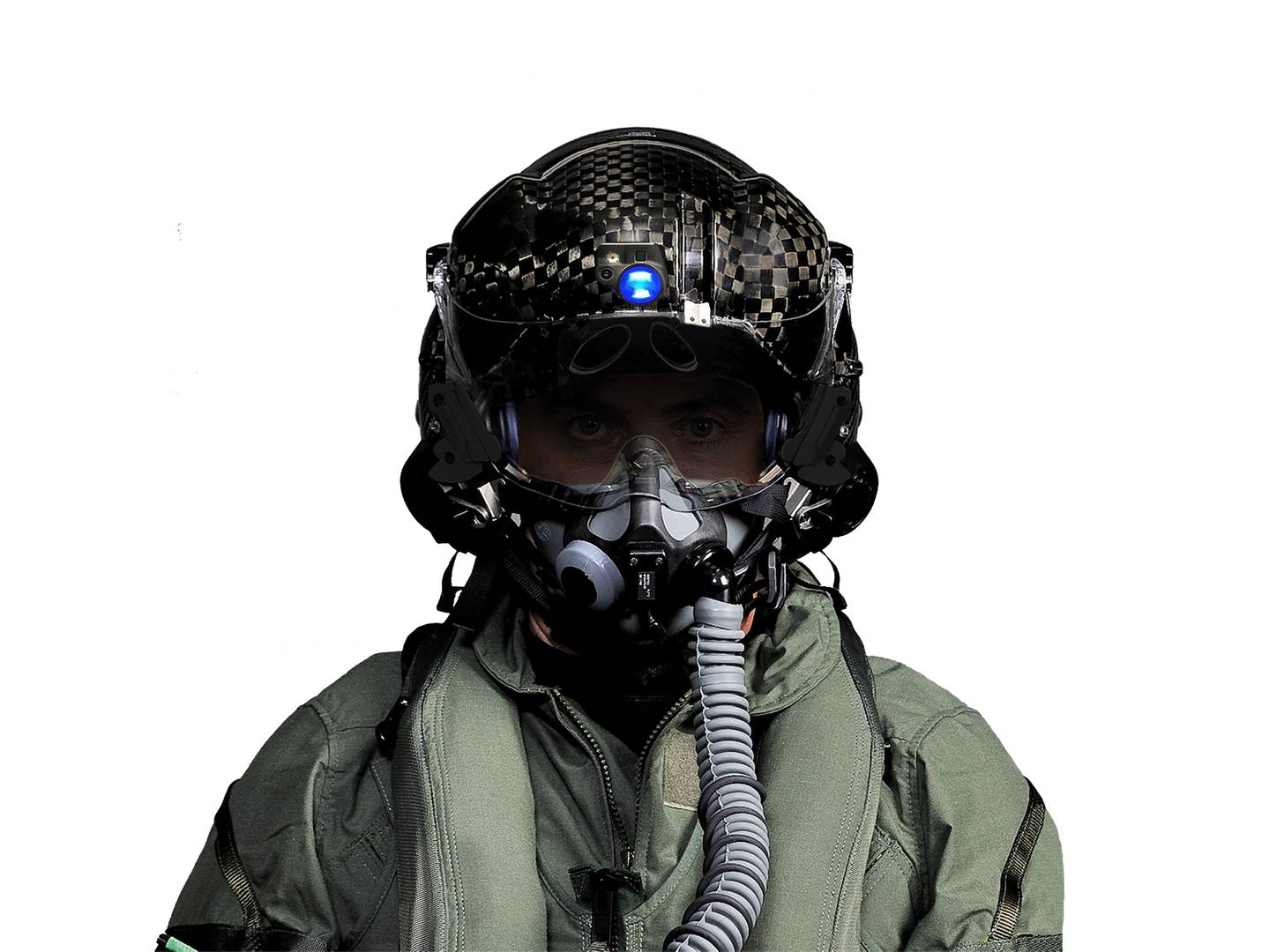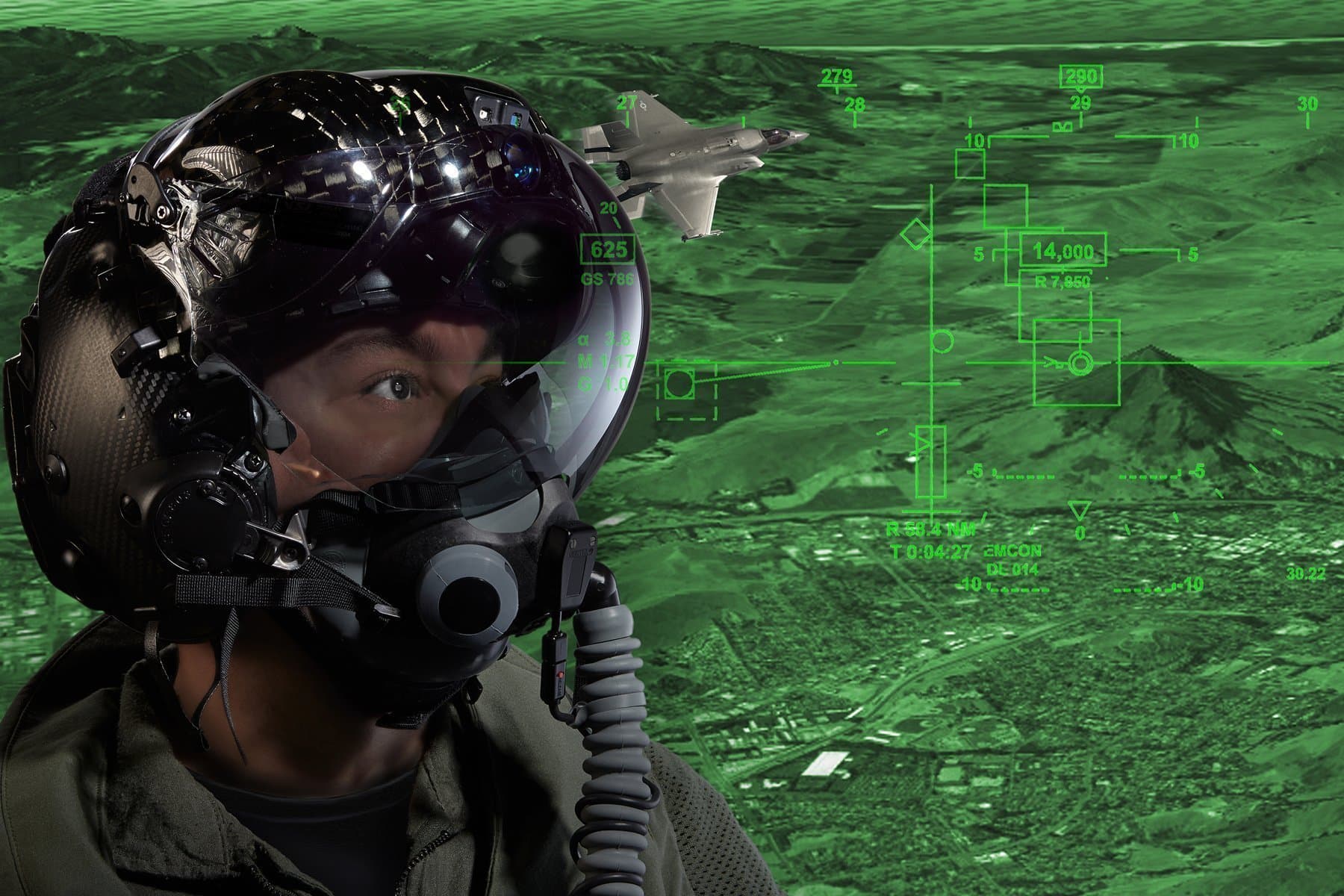There’s a scene in Top Gun that troubled my childhood more than any horror film I’ve seen. It isn’t the volleyball game. It isn’t the duet either.
Maverick and Goose are in an aerial waltz with an enemy MiG. The pair maneuvers a roll which lets them coast — inverted — over the other plane. (You must remember this scene.) While they fly a few feet above the bogie, Maverick shoots the enemy a bird, as the oft-comedic Goose snaps a Polaroid. (Remember?)
Immediately before Maverick’s digital show of affection, we see the MiG pilot in his cockpit, visor down over his face. In contrast to the American pilots — who wear patterned helmets and oxygen masks but uncovered eyes — the MiG pilot’s face is almost entirely concealed.
As a child this image fried into my mind’s eye. The pilot — whom I now recognize to be an intentionally dehumanized Russian — was nothing less than a cyborg hell-bent on universal human destruction. His visor was not an accessory but an appendage, an integral part of his existence as a pilot and the source of his hybridity.
Fast forward a couple decades and I see this:

Looking something like a cross between a Storm Trooper and the infamous MiG pilot, the Gen III Helmet Mounted Display System (HMDS) is the Swiss Army Knife of helmet mounted display systems. The system, developed by Rockwell Collins ESA Vision Systems, LLC, was delivered to the aerospace, security and advanced technology firm Lockheed Martin back in July, 2014 for software integration into the F-35 Lightning II aircraft. Over 160 HMDS units were provided for integration and the system has logged a staggering 15,000 hours of test flight on the F-35 aircraft.
With a wide visor and custom-built helmet, the integrated system gives its pilots a 40ºx30º “real” field-of-view. But the pilot’s visual awareness goes well beyond 40ºx30º. Through a Distributed Aperture System (DAS) provided by Northrop Grumman, HD cameras placed around the aircraft feed live footage to the helmet mounted display, enabling pilots to look through the plane at what’s beneath, to the side, and all around without obstruction. This amounts to a 360º virtual FOV.
Traditional helmets require additional goggles for infrared and night vision. I.e. when a pilot wants to switch from normal to night vision, he needs to put on night vision goggles. The Gen III HMDS eliminates this manual need, as it automatically adjusts and projects the night vision (or infrared) scene directly onto the visor.
In another efficient synergy of man and machine, the Gen III HMDS also allows pilots to target, designate and verify enemy aircraft by simply looking at them. The pilot can then confirm and manually fire missiles to avoid error. This is known as an “off-boresight” launch. While automatically targeting, the helmet displays all critical flight information, which assists the pilot in maintaining control and situational awareness.
The amount of information displayed by the Gen III HMDS sounds extreme, absurd even. The human brain is programmed to process only so much data at once. But Rockwell insists that the system, when utilized properly, mitigates information overload and allows the pilot to fly and perform tasks more efficiently. Rather than a dashboard of analog information, the Gen III HMDS displays data digitally, head-up and with relative clarity.
In fact, it’s the extent of functions and information that the Gen III HMDS proffers that makes it so unique and so advanced. Off-boresight launches are not exclusive to aircraft integrated with Rockwell’s system. But these capabilities combined with the 360º virtual imaging, infrared, night-vision, and the comprehensive head-up display gives future F-35 pilots a distinct advantages. One such pilot explains his preference for the headset in a video by Aviation International News:
Translate this technology into consumer devices and drivers could change lanes by focusing on the corners of their rearview mirrors, brake by blinking twice, or adjust the volume by bobbing their heads a few times. We’ve seen eye-tracking in technology smartphones. Why not in automobiles?
The most interesting aspect of all of this is the subtle blurring of distinction between the roles of man and machine. The pilot is still a pilot and the plane is still a plane, but the Gen III HMDS features are so integrated into the pilot’s perception of reality that he becomes — through a stretch of definition — a cyborg. A traditional pilot maintained clear authority over and distinction from his plane. Through intuition and careful mapping this pilot “knew” things better than his aircraft. But in a F-35 Lightning II with a Gen III HDMS equipped pilot, it’s not obvious who is controlling what or what is controlling whom.
Image credit: Rockwell Collins




















